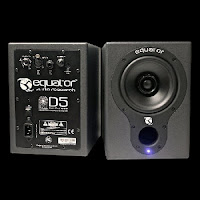Indian sitar master
Ravi Shankar passed away yesterday, so I thought it appropriate to tell a couple of stories of when I met the man. Now these were extremely brief, almost incidental encounters, but he left such an impression that I believe they're worth passing on in his honor.
I met Ravi at a party at
Pacific Ocean Post Sound, which was then owned by co-founder
Alan Kozlowski. Alan is a remarkable man in that here he was the CEO of one of the most influential post houses in Los Angeles, yet he was a great guitar player who refused to give it up. In fact, his passion was so great that he even played tamboura with Ravi on dates in the area. The two had a special bond, with Alan calling him "my father."
POP is a huge facility with 11 state-of-the-art mixing stages, but as soon as I got there I was drawn to one of the larger lounges for some reason. As I was peeking inside I found a radiant Ravi holding court. Radiant is a good word for him because he was indeed brighter than anyone else in the room almost like there was a halo around him. Now I wasn't a particularly big fan of his, so this has nothing to do with being star-struck, but there was something about him that was indeed larger than life. And he really glowed! It was as if there was a shining light around him that I can still see in my mind.
There was something about the man that drew everyone to him. He was quiet and demure and not at all trying to be the center of attention, yet he was the focus of everyone in the room. I don't attribute this to his superstardom or his talent as much as his spirituality. It was a magnetic and unrelenting forcefield that you were drawn to and couldn't break away from.
We were introduced, I said virtually nothing of importance, and was as nice as could be considering that was probably about the millionth time he was in that same situation. But I distinctly remember being in his presence and that is something that will live with me forever. I've met many a superstar and some have a distinct aura about them, but none could compare to whatever it was that came from that mild, soft spoken man.
My second experience with Ravi Shankar came a few weeks later. I was given some tickets to a concert that Alan was playing with Ravi at
Pasadena City College. My tickets said they were in Row YY, which I assumed was as far back in the room as you could get. When I got there and gave my ticket to the attended, sure enough we went to the last row of the balcony, only to find that there was no Row YY there. After a brief conference with another attendant, the girl turned to me with a smile and said, "I know where you're going," and proceeded to take me down to a near center seat in the first row!
The concert started almost immediately so I didn't have much time to get my bearings in the grand scheme of where I was in the audience. At a Ravi concert, the doors are locked when the raga begins and everything gets respectfully quiet, so you have to get settled quickly. About 20 minutes into the raga (the first one lasted 45 minutes) I started to notice the people around me. On my left was a guy wearing an old red plaid flannel shirt with slightly long unkept hair and about a 3 day beard. I thought I knew him from somewhere but couldn't place him. Another 10 minutes and another quick look - could it be? Another 5 minutes - naw, can't be him. Finally at the end of the raga we were both clapping and looked at each other and smiled and I thought to myself, "I'm pretty sure that's
George Harrison."
At the end of the next raga we exchanged some brief small talk, and of course, he had that unmistakeable Liverpool accent, but I still wasn't sure it was him until the end of the concert, when he climb on stage from his seat and hugged a rather pleased Ravi Shankar. Yes, it was George.
Let me just say that a Ravi Shankar concert held the exact same vibe as the man. It was larger than the music. It was a spiritual experience (the only other concert where I felt this was with
Carlos Santana). You didn't have to like the music, because there was something larger than that involved, and it touched everyone who was there. Not many artists, especially these days, can do the same.
In my extremely brief time with him, Ravi made an indelible mark. I can only imagine what it could have been with more exposure. Hopefully he and George are now playing ragas together again.
----------------------------------





